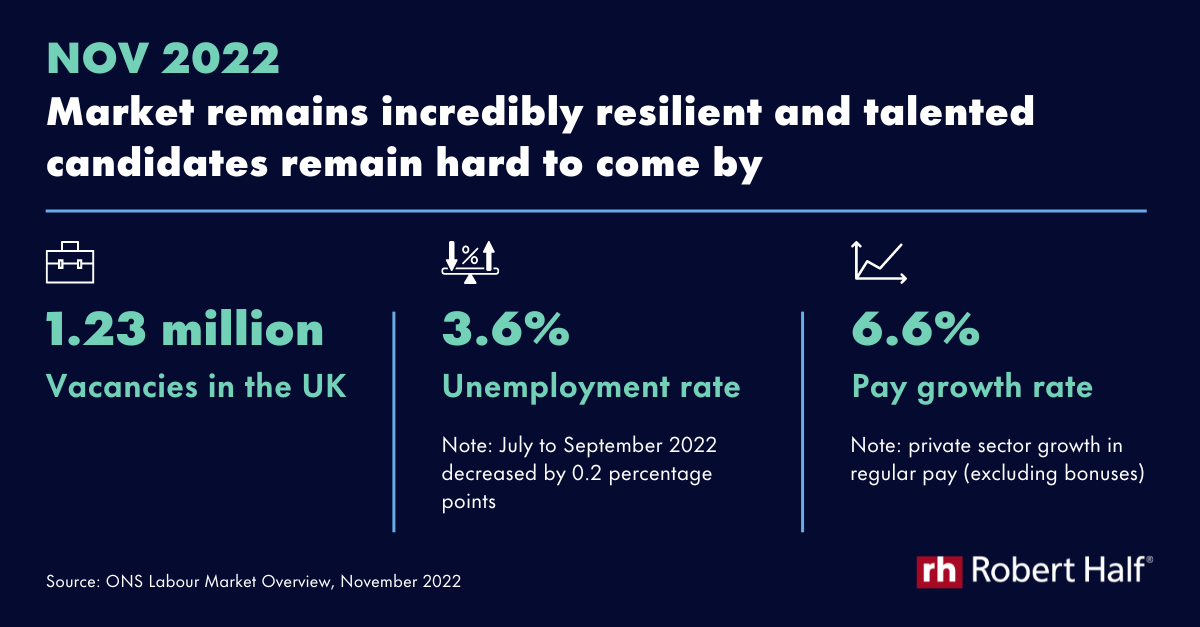
"If a labour market in an economy functions with demand and supply of labour, the market remains incredibly robust and talented candidates are hard to come by. Despite four consecutive, gradual quarterly falls, the number of vacancies to jobseekers remains at historically high levels. There simply are not enough skilled workers for the jobs available. This is contributing to very strong regular pay growth, which is now running at 6.6% in the private sector. Employers are pulling out all the stops to attract, and crucially, retain staff. However, even if high inflation is eroding pay packets and a recession is forecast for the end of 2022, we are entering 2023 with record low unemployment and where the redundancy rate, whilst edging up, is below pre-pandemic rates.” Matt Weston, Senior Managing Director - UK&I, BeNeLux & UAE at Robert Half
To compete in 2023, employers will continue to need to step up – particularly in understanding their workforces and local labour markets, making their proposition more flexible and value-added, such as improving access to training, wellbeing and support. To help, our 2023 salary guide gives essential employer insights on over 200 salaries and the latest industry hiring trends from leaders across tech, finance, accounting, legal, and hr.







